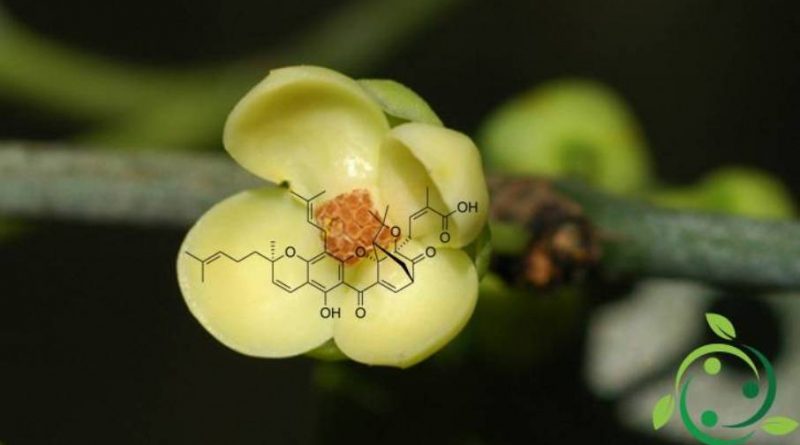Gambogic acid
Gambogic acid
Gambogic acid, whose term in the IUPAC official nomenclature is: (Z) -4 – ((1S, 3AR, 5S, 11R, 14aS) -8-hydroxy-2,2,11-trimethyl-13- (3- methylbut-2-en-1-yl) -11- (4-methylpent-3-en-1-yl) -4,7-dioxy-2,3a, 4,5,7,11-hexahydro-1H-1 , 5-methanofide [3,2-g] pyran [3, 2-b] acid xanthen-3a-yl) -2-methylbut-2-enoic, and has a brute or molecular formula: C38H44O8.
Gambogic acid is a xantonoid of natural origin, somewhat abundant in the tissues of plants of the Garcinia genus, in particular present in Garcinia Hamburyi.
Gambogic acid is present in particular in gommagutta, a rubber resin that contains 60 -80% of resin and 15-25% of rubber extracted precisely from plants of the Garcinia genus.
According to some studies, researchers from the Department of Hematology at the Huazhong University of Science and Technology in Wuhan have highlighted the mechanisms of action of gambogic acid on the proliferation and induction of apoptosis in hematological malignant cells.
In vitro and in vivo studies have shown that gambogic acid exerts powerful anticancer effects against solid tumors of various derivations and its anticancer mechanisms have been widely investigated. Healthy cells in fact remain relatively resistant to the action of the acid, offering a therapeutic window.
Gambogic acid is therefore, if research in progress is confirmed, a promising anticancer agent that acts through various mechanisms in solid tumors and hematological malignancies. It can be exploited in several malignancies that are refractory to standard therapy as it acts through numerous anticancer mechanisms.
Gambogic acid proves to selectively destroy cancer cells, but spares healthy cells.
Warning: The information shown is not medical advice and may not be accurate. The contents are for illustrative purposes only and do not replace medical advice.

